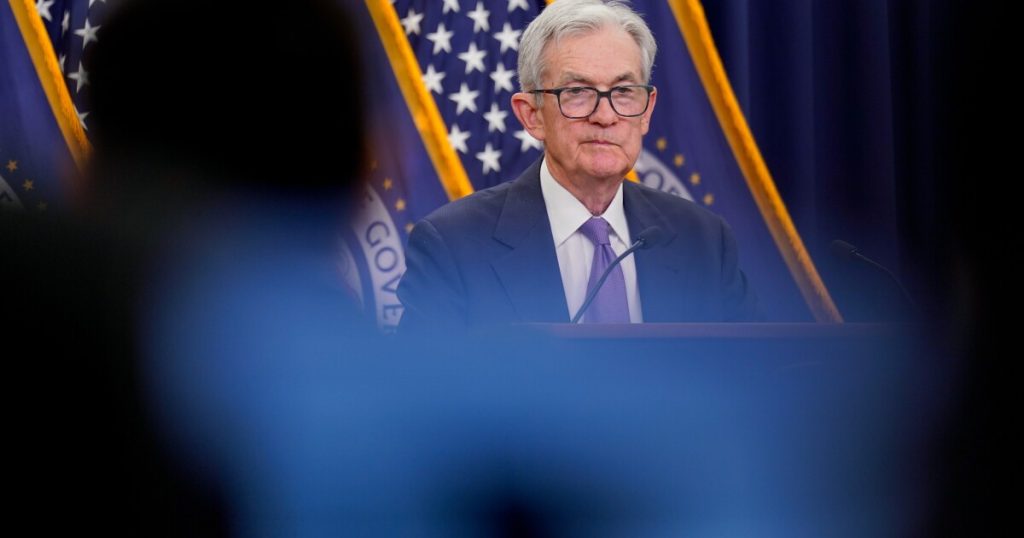- Key Insight: The October Federal Open Market Committee cut interest rates by 25 basis points as expected, but comments from Chair Jerome Powell caught market watchers off guard, casting doubt on the likelihood of another rate cut in December.
- Expert Quote: “There were strongly differing views about how to proceed in December. A further reduction in the policy rate at the December meeting is not a foregone conclusion — in fact, far from it.” — Fed Chair Jerome Powell.
- What’s at stake: Labor market data, yet to be released by the BLS due to the government shutdown, can have a meaningful impact on whether or not the central bank moves once more to cut rates in December.
The Federal Reserve’s interest rate-setting committee Wednesday voted to cut short-term interest rates by 25 basis points, as most market watchers had predicted. It also announced a December end to its quantitative tightening program, which was also expected.
What came as a surprise, however, were diverging views among members of the Federal Open Market Committee on the path forward for the central bank’s monetary policy.
The move to reduce rates was
Schmid’s dissent suggests that at least some members of the committee are viewing the risks posed by rising inflation as greater than the risks of a further weakening labor market. That view would stand opposed to the view expressed by Miran, who has argued that structural changes in the economy brought on by President Trump’s tariff and immigration policies have made existing monetary policy far more restrictive than conventional wisdom would lead us to believe.
Fed Chair Jerome Powell acknowledged the split, saying the October FOMC meeting reflected “strongly differing views” on how the committee should proceed. Powell questioned the likelihood of another 25-basis-point rate cut in December, emphasizing that policy is “not on a present course.”
“There were strongly differing views about how to proceed in December,” Powell said. “A further reduction in the policy rate at the December meeting is not a foregone conclusion — in fact, far from it.”
Powell added that the FOMC will continue monitoring economic indicators before making its next decision, saying the dissents should signal to markets that the outlook remains uncertain.
“They’re very disparate views, and they were reflected in strongly different views in today’s meeting,” Powell said. “That’s what leads me to say that we haven’t made a decision about December. I always say — and it’s a fact — that we don’t make decisions in advance, but this is something in addition here … it’s not to be seen as a foregone conclusion.”
Andrzej Skiba, head of BlueBay U.S. Fixed Income at RBC Global Asset Management, said the market is currently pricing in a 70% chance of a December cut and nearly three cuts in 2026, though the December decision will hinge on incoming labor market data.
“As for 2026, we argue that a new Fed chair is likely to advocate for a cut upon assuming office, but it’s a perfectly plausible scenario that we see fewer than three cuts across 2026, driven by our expectations of both stronger growth and sticky inflation,” Skiba wrote Wednesday.
Michael Pearce, deputy chief U.S. economist with Oxford Economics, said in an analyst note that Schmid’s hawkish dissent and Powell’s “clear signals” have shifted market expectations.
“The hawkish dissent from a regional Fed president and the clear signals in the post-meeting press conference that the Fed is preparing to move to the sidelines sharply shifted market expectations of future cuts,” the note said.
During the press conference, Powell also said that the
“I’m not committing to that,” he added. “I’m just saying it’s certainly a possibility that you would say, ‘We really can’t see, so let’s slow down.'”
The Fed will stop shrinking the size of its balance sheet and will begin normalizing the mix of its assets by replacing maturing mortgage-backed securities with Treasury bills.
Critics of the Fed’s asset purchase programs argue that the central bank should have wound down quantitative easing sooner, saying it contributed to inflationary pressures that have pushed housing prices higher.

